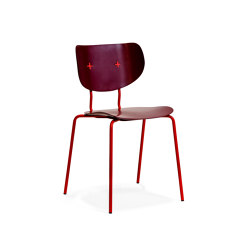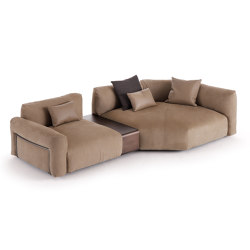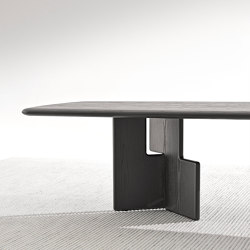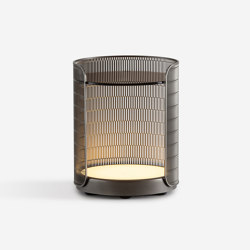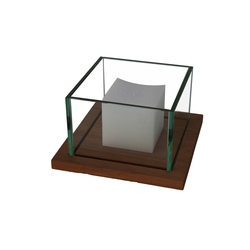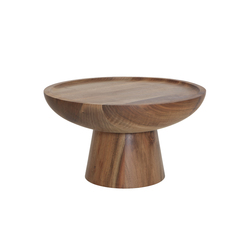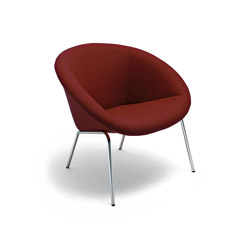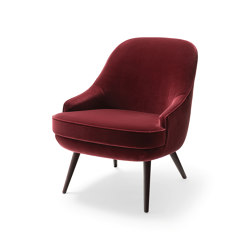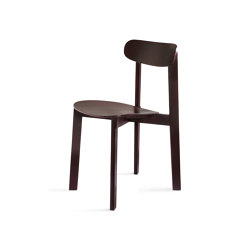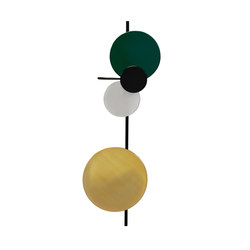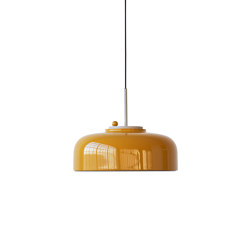Informazioni su Rybo As
MAGGIORI INFORMAZIONI SU RYBO AS
The national sentiment grew strong in the Norwegian population prior to the dissolution of the union with Sweden. Within art, culture and craft, the period was called “National Romanticism”. Oddmund P. Rykken (educated by Lars Kinsarvik) was eagerly engaged in this within wood engraving, and became a very skilled craftsman. He started his own production in 1918. As his son, Olav O. Rykken, finished his education, the factory was expanded (1933). Further factory extensions were made in 1954, 1960, 1967 and 1972.
In the first period, prior to the 2nd world war, the main product mix was wooden carved dining tables and chairs, corner cabinet and buffets. Post war production was characterized by much simpler design, first coffee tables with brass columns on the legs, then sowing tables and radio tables. Organic forms came into focus in the late 1950’s, followed by laminated furniture from the 1960’s.
The Siesta chair was at first produced by Vestlandske Møbelfabrikk AS, which later was bought by Ekornes in the late 1990’s. However, the Siesta did not fit in their product mix, as it requires a lot of handcraft. Due to skills and traditions with corresponding products, such as the Kengu chair produced from 1966-88, the work force had the necessary experience in laminating techniques and the demanding handcraft that Siesta requires.
Mr. Ingmar Relling worked closely with Vestlandske Møbelfabrikk AS all his working life, while Rybo had close collaboration with the designers Elsa and Nordal Solheim, creating the Kengu chair among others. Good relationship with Mr. Knut Relling, the son of Mr Ingmar Relling, after the takeover, is a solid foundation of a continuing market success of the most famous international price award winner, Siesta.
The vision of Rybo is to continue focusing on top design, quality and functionality together with good handcraft.
The national sentiment grew strong in the Norwegian population prior to the dissolution of the union with Sweden. Within art, culture and craft, the period was called “National Romanticism”. Oddmund P. Rykken (educated by Lars Kinsarvik) was eagerly engaged in this within wood engraving, and became a very skilled craftsman. He started his own production in 1918. As his son, Olav O. Rykken, finished his education, the factory was expanded (1933). Further factory extensions were made in 1954, 1960, 1967 and 1972.
In the first period, prior to the 2nd world war, the main product mix was wooden carved dining tables and chairs, corner cabinet and buffets. Post war production was characterized by much simpler design, first coffee tables with brass columns on the legs, then sowing tables and radio tables. Organic forms came into focus in the late 1950’s, followed by laminated furniture from the 1960’s.
The Siesta chair was at first produced by Vestlandske Møbelfabrikk AS, which later was bought by Ekornes in the late 1990’s. However, the Siesta did not fit in their product mix, as it requires a lot of handcraft. Due to skills and traditions with corresponding products, such as the Kengu chair produced from 1966-88, the work force had the necessary experience in laminating techniques and the demanding handcraft that Siesta requires.
Mr. Ingmar Relling worked closely with Vestlandske Møbelfabrikk AS all his working life, while Rybo had close collaboration with the designers Elsa and Nordal Solheim, creating the Kengu chair among others. Good relationship with Mr. Knut Relling, the son of Mr Ingmar Relling, after the takeover, is a solid foundation of a continuing market success of the most famous international price award winner, Siesta.
The vision of Rybo is to continue focusing on top design, quality and functionality together with good handcraft.
MAGGIORI INFORMAZIONI SU RYBO AS

